No one would like to share his bed with an insect, especially when it is as notorious as a bed bug. These tiny flax-seed-sized bed bugs come out at night and are difficult to find in the daytime as they can easily hide in small corners and cracks. These small insects can literally be found anywhere from mattresses to cushions to couches – they surround you without even knowing.
The bed bug bites usually go unnoticed until you realize you are under their infestation. The more time you take to identify these tiny bloodsuckers, the more rapidly they multiply, forming an entire army of these notorious enemies that can be easily transferred from one place to another. The bed bugs are not only on your bed or cushions; they can go wherever they want and hide anywhere at your home.
Common Signs of Bed Bugs
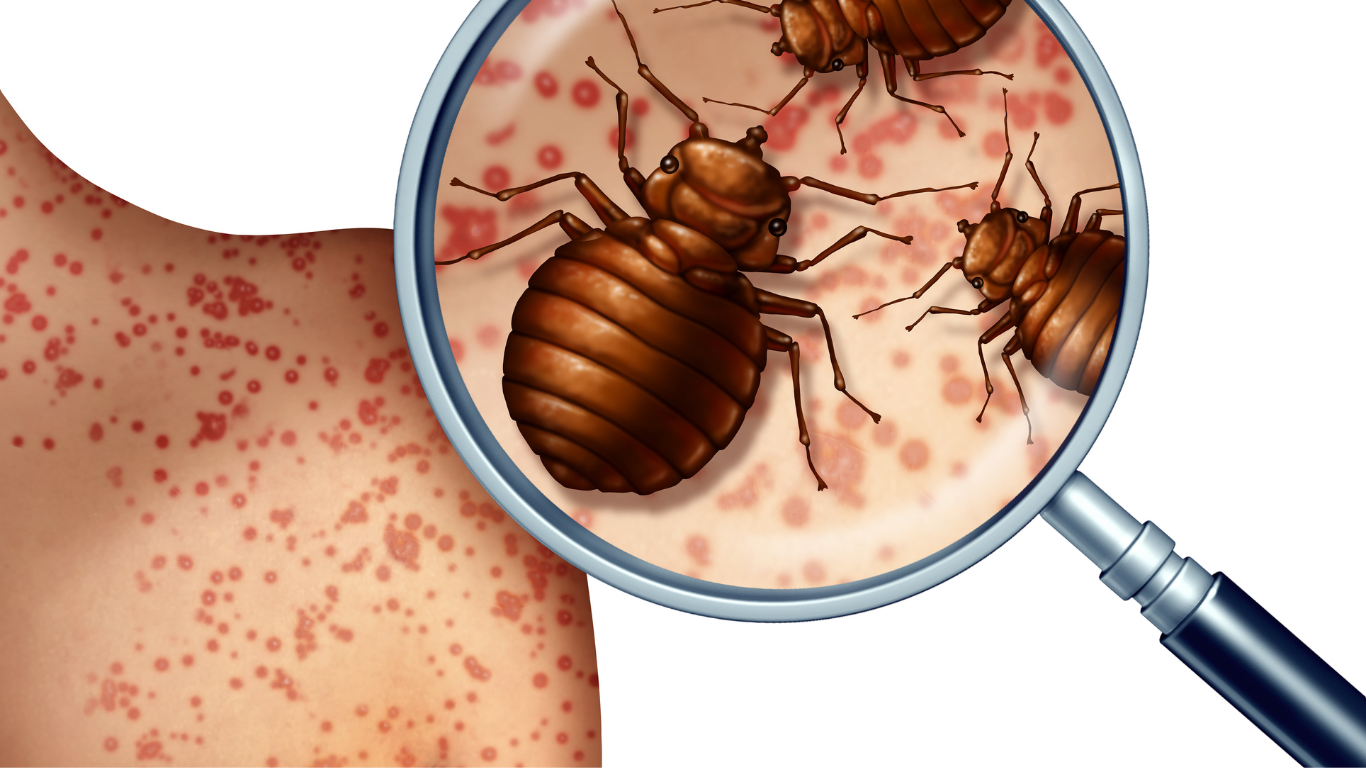
Early detection of bed bugs inside your house can save you from their rapid and dangerous infestation. For this, you have to figure out various signs left by these notorious bugs. Some of the common signs of bed bugs include:
- Bed bug bites resemble the itchy, swollen bumps that usually appear on the exposed skin areas such as arms, face, feet, legs, and even neck.
- The unusual red stains on the sheet are caused by the squashing of bed bugs while they are feeding on your blood.
- You probably have noticed dark feces on your bed that are less than 1mm and, sometimes, cannot be identified by the naked eye. The presence of dark feces indicates the presence of a notorious bed bug on your bed.
- Interestingly, when a bed bug grows, it sheds its exoskeleton in brown shells. The dried-out, discolored skin remaining on the bed or any other spot indicates the presence of a bed bug.
Why are the Bed Bugs Difficult to Suspect During the Daytime?
While it is easy to suspect a bed bug during the night when they are jumping and dancing on your bed, feasting on your blood, and leaving their marks behind, it is extremely difficult to find them in the daytime when they hide in different spots. After these tiny vampires feast on your blood at night, they rush to their hiding places in the morning. The bed bugs are not a fan of natural light, so they rarely come out of their hiding spots during the day, which makes it extremely difficult to spot them around.
Common Places for Bed Bugs to Hide
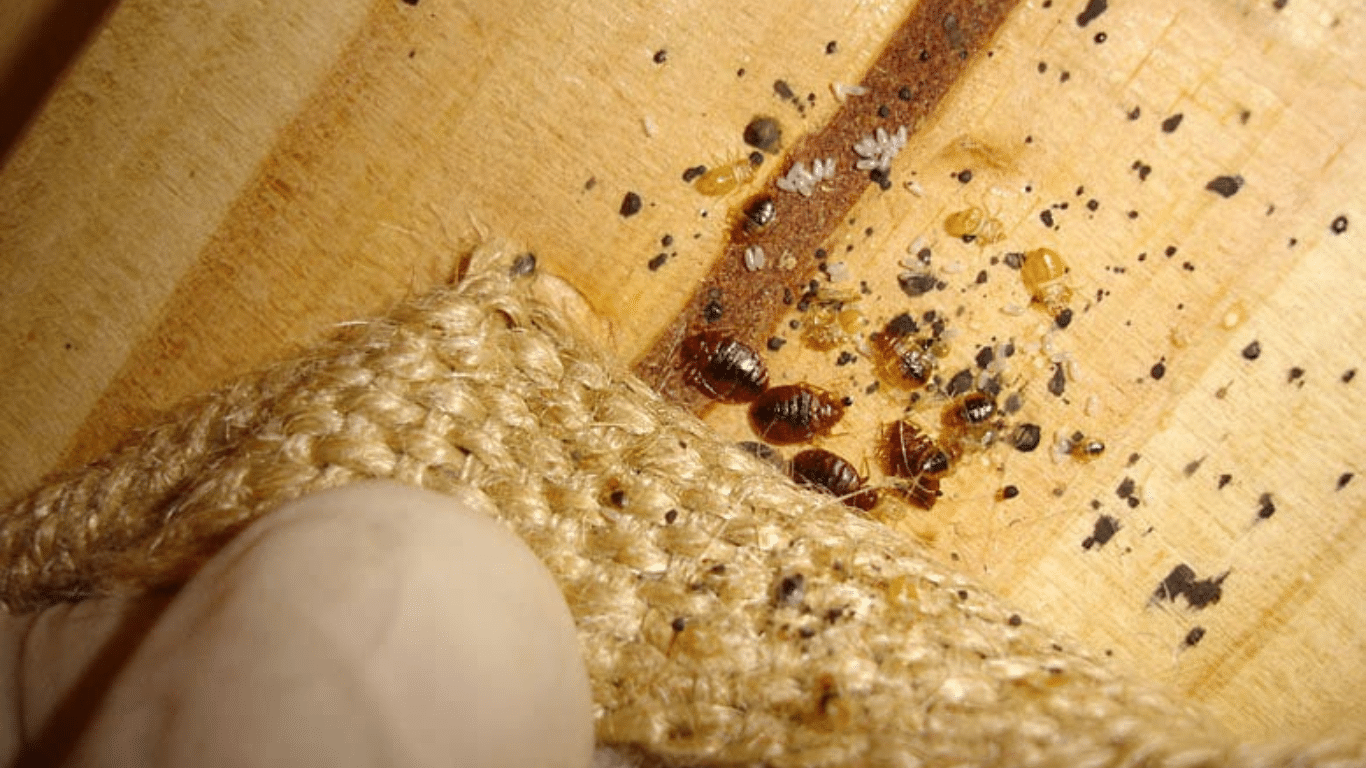
Do you know a tiny bed bug can also hide in the gaps within 6 to 8 feet depth of your bed? A space that is close to its potential host is the most favorable spot for a bed bug to hide. The most commonly used spaces for a bed bug to hide are:
- Gaps in the headboard
- In the wall cracks, usually at the spot of a nail
- Drawer joints
- Cushion covers
- Carpets and couches
- Electrical outlets
- Wall holes
- Upholstered furniture
So, now that you know the common hiding spots of a bed bug, it is easy to spot them even during the daytime by following the right instructions.
How to Suspect a Bed Bug During the Daytime? And Get Rid of Them
While a bed bug loves to hide in the hidden dark spots of your house in the morning, you need to be attentive to spot them during the daytime as they frequently come out during the daylight. Here, we have come up with useful tips that may help you detect the bed bugs around your house, even during the daytime.
Use a Flashlight
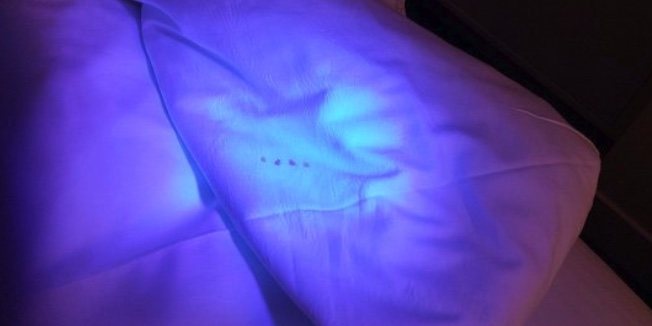
A bed bug is as small as a flax seed or even smaller and usually cannot be seen through the naked eye. Start spotting these bugs where they are most likely to be found, such as behind the picture frames, headboards, drawers, corners, and mattresses, with the help of a flashlight for easy detection. You must be very patient during the process, as you might have to check many corners and spots around your house.
Try a Canine Bed Bug Inspection

You might have never heard about the dogs trained specifically to suspect bed bugs inside a home. The canine bed bug inspection team is a team of trained dogs that suspect the bed bug infestation better and faster than the traditional inspection methods. Since dogs have a sharp sense of smell, they can easily find out the spots where the bed bugs are hidden by sniffing out the bed bugs near their hiding spot.
Use a Card to Suspect Bed Bugs Eggs
If you are in doubt of a particular crack being infested with bed bugs, take out your credit card or any thin card and put it inside the cracks. Now, gently pull the card out. If the crack has bed bugs inside, the card will have bed bugs, eggs, and nymphs attached to its surface.
Do a Deep Cleaning of the Mattress
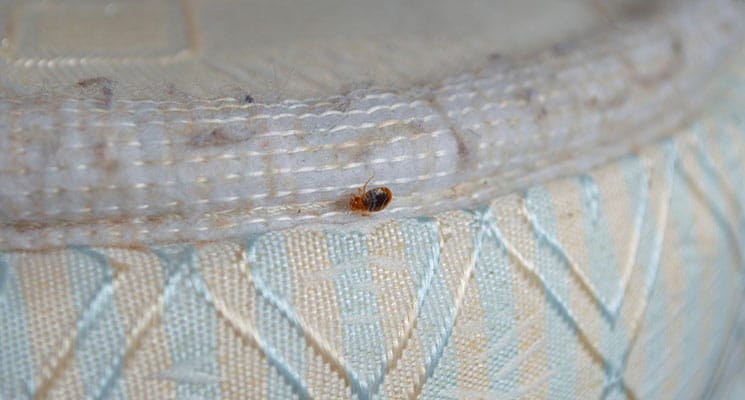
A mattress is the most anticipated spot to find a bed bug. Start by removing the sheets, pillow covers, and cushion cases. Check the headboard gaps and bed frame, as a bed bug might be laying its eggs. Now vacuum the mattress using a nozzle attached to its head. Don’t forget to empty the vacuum bag to avoid the further spread of these little bloodsuckers.
Use Baking Soda

If you suspect a spot of any bed bug or a team of these tiny creatures, pour some baking soda on them. Since baking soda has moisture-absorbing properties, it will instantly dehydrate the bed bugs when they come in contact with the soda and eventually kill them. If you are not sure about the hiding spot of the bed bugs, you can create a trap by mixing baking soda and flour together and putting it in an open pan or dish. The flour will attract the bugs, and once they crawl to it, the baking soda will instantly kill them.
Make a Vinegar Solution

This is another effective remedy to combat these bed bugs. All you need is to mix one part of vinegar with three parts of water and mix them thoroughly. Put the mixture in the spray bottle and spray it directly on it wherever and whenever you see a bed bug. Vinegar has the tendency to destroy the exoskeleton of these bed bugs and other insects within seconds, so when a bed bug comes in contact with it, it will instantly kill it. Spray this solution anywhere at home, inside the drawer joints, in wall cracks, or in any place with a possible infestation.
Set Traps for the Bugs
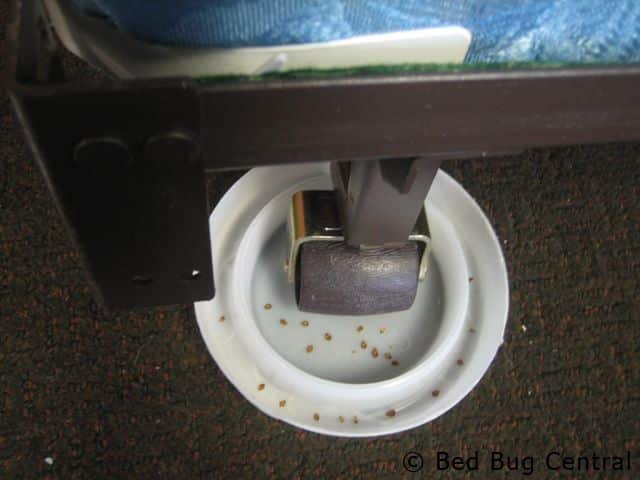
When nothing works, and the beg bug is stubborn and not to be found easily, it’s time to set some traps for it. The bed bugs interceptors work great as a trap and are easily available in the market. These interceptors look like tiny dishes covered with walls and are placed around the four legs of your bed. These dishes are rough on the outside and have smooth walls on the inside so that the trapped bugs couldn’t find their way out. When the bed bug climbs to your bed to reach you, it slides down into the interceptor and falls into it.
Ask a Professional Pest Control Company
When nothing works, and the bed bugs infestation gets out of control, it’s time to contact a professional team of pest controllers. They will thoroughly examine your house and create a treatment plan in which the drying machine of high temperatures is used to kill these tiny bed bugs. The heating treatment effectively controls the production of bed bugs and their eggs, performed only under qualified and experienced pest controllers.
Conclusion
Contacting a professional pest control service provider is imperative if you suspect bed bugs are disturbing your sleeping routine. These pests are challenging to eradicate, and an infestation can swiftly take over your entire house. There are numerous at-home bed bug sprays and traps available, but none of them can get rid of the eggs and nymphs, which are the primary source of a bed bug infestation. Thus, contacting a pest control team as soon as possible is advised.
Frequently Asked Questions
Why are they called ‘bed bugs’?
Bed bugs are usually found feeding on your blood when you are sleeping on the bed. The Latin name for the bloodsucking bed bugs is ‘Cimex lectularius,’ which stands for ‘bug of the bed.’ This is why these tiny creatures are called bed bugs.
Who can get bed bugs?
Anyone can have bed bugs in their homes regardless of their hygienic measures or cleanliness protocols. Getting bed bugs has nothing to do with the lack of cleanliness, poverty, or poor housekeeping.
Are bed bugs dangerous?
Bed bugs are not proven to affect an individual more than giving him bites that resemble tiny rashes. The presence of bed bugs may disturb your sleeping routine as due to their continuous bloodsucking habit, the individual might struggle to sleep properly.
When does a bed bug come out?
A bed bug usually comes out at night. According to scientific research conducted at Department of Entomology, Virginia Tech, the peak time of a bed bug attacking human blood is usually between 2 AM and 5 AM.
What are the bed bugs attracted towards?
Bed bugs are usually attracted to the human body temperature and the carbon dioxide exhaled by a human individual.
How many times does a bed bug shed its skin?
An immature bed bug sheds its exoskeleton or dead skin cells almost 5 times before reaching adulthood.
What are the signs of bed bugs?
The common signs of bed bugs are itchy bumps like rashes, unusual stains on the sheets, shed dry skin cells, and dark-colored feces on the bed.
What are the common hiding spots of a bed bug?
The bed bugs are commonly hidden in spots, including bed, drawer joints, electrical outlets, wall cracks or holes, upholstered furniture, carpets, and cushions.
What are the living conditions of a bed bug?
A bed bug is found anywhere near its host and remains active at a room temperature of at least 7 degrees centigrade. Once their body comes in contact with a temperature higher than 45 degrees centigrade, they instantly die.
What is the reason for having bed bugs?
There is no exact reason for causing bed bugs. However, they are most common in places with more crowds, such as hotel rooms. They can be transported from place to place through luggage and clothing. Also, since a bed bug loves to feed in warm conditions, it is most commonly found in the bed, closer to its meal source.
Do bed bugs bite only humans?
No, bed bugs do not only bite humans. Any warm-blooded mammal is the potential host of a bed bug, including pets.
What is the lifespan of a bed bug?
A beg bug can live up to 6 months and even for a year if provided with the ideal living conditions.
How does a bed bug bite affect an individual?
A bed bug bite leaves redness, swelling, or itchiness on the human skin and even leads to anaphylaxis in certain cases. A bed bug infestation also results in a lack of proper sleep.
Does the bed bug bite only during the night?
Although the bed bug comes out at night, it does not limit itself from biting an individual in the daytime only. Since a bed bug is an opportunist, it starts biting on human blood if it finds its host closer, for example, during a nap.
What are the common spots where a bed bug bites on the human body?
A bed bug usually bites on the exposed human skin, such as the neck, arm, elbow, legs, feet, hands, and any body part that is not covered by clothing. They can also hide in your hair and clothing.
What does a bed bug bite look like?
A bed bug bite looks like an inflamed, raised bump that appears in a zig-zag or any random pattern. The bump resembles an acne mark with a dark red center and lighter skin on its surroundings, containing transparent fluid.

Emily Smith is a talented content writer, wielding words to create captivating stories and informative articles across a wide range of topics. With a passion for effective communication and a love for research, Emily consistently produces engaging and valuable content. She’s dedicated to conveying ideas clearly and compellingly, making her a sought-after voice in the digital sphere. When not writing, Emily enjoys immersing herself in art, nature, and culinary adventures for fresh bursts of creativity.






Loading…